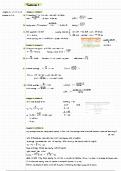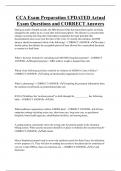College aantekeningen
Tutorials Ondernemingsfinanciering en Vermogensmarkten (323622-B-6)
Dit zijn handschreven uitwerkingen van de tutorials van het vak Ondernemingsfinanciering en Vermogensmarkten gegeven op Tilburg University. Deze uitwerkingen zijn handgeschreven met behulp van een Ipad met een duidelijk handschrift. Als je toch iets niet kunt lezen, stuur me gerust een berichtje :)...
[Meer zien]













